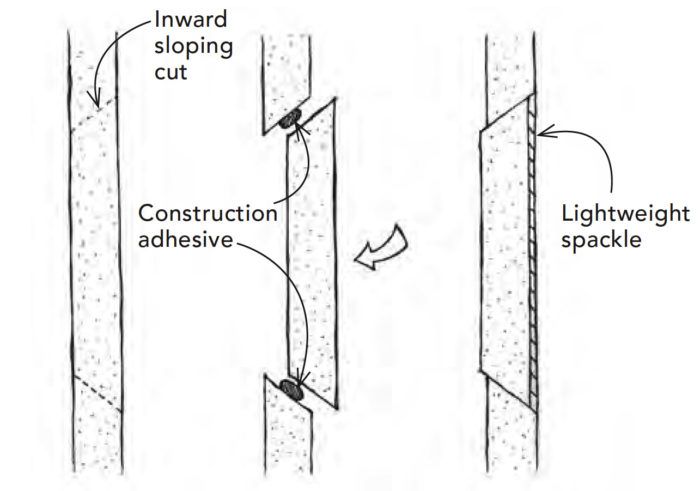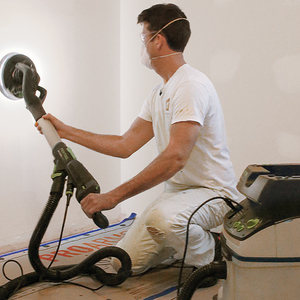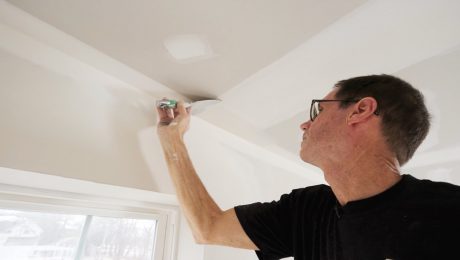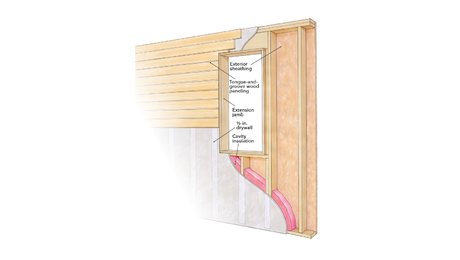
When cutting a hole in drywall, I use an oscillating multitool to make an inward sloping cut on each side so that the resulting cut-out piece can be reinserted into the hole. When the time comes to replace the piece, I run a bead of construction adhesive around the sides to adhere it to the wall.
Because the multitool created a small kerf, the patched piece sinks a little bit below the wall surface. So I fill in the depression and finish the edges with lightweight spackle. This takes a few coats with light sanding in between, but it creates much less mess than traditional taping and feathering with joint compound.
— David Matzinger, Menlo Park, Calif.
From Fine Homebuilding #264
RELATED STORIES
Got a Tip?
Do you have any great tips like this one on how to patch drywall without tape? Share your methods, tricks, and jigs with other readers. Tag them @FineHomebuilding on social, email them to us at tips@finehomebuilding.com, or upload them to FineHomebuilding.com/reader-tips. We’ll pay for any we publish.





























View Comments
I LIKE that...smart and simple!!!!!
Won't it still crack around the edge at some point? Seems repairs always do that without tape.
If you want to use tape, try "FibaFuse." It's a non-woven fiberglass tape and when used with hot (setting) mud, it's stronger than paper tape. It's 1/3 the thickness of paper tape, so you don't have to feather as far for good appearance.
It's permeable, so if you have a bubble, swiping a knife across it will push the air through the tape. Likewise, you can remedy a dry spot by mashing mud through the FibaFuse.
There are 2 types, new and old. The old is thinnest and plain white, the new has blue threads in it. Both are OK, but the thinner type is better for repairs and is (kinda) available from the Big Orange Box and other drywall suppliers.